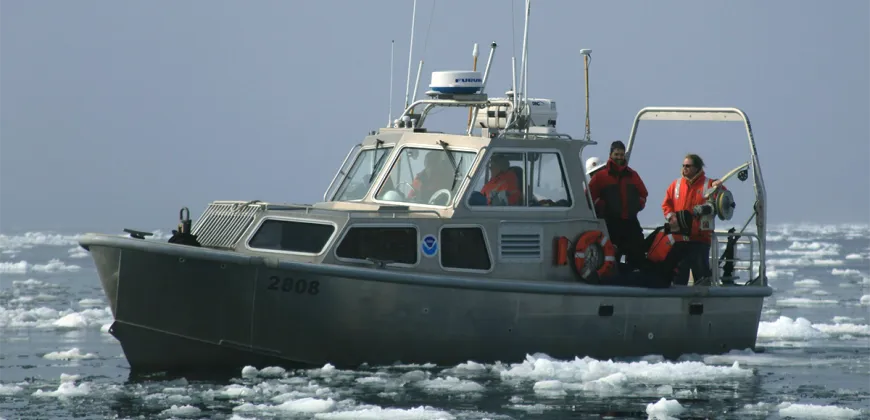Decarbonizing the marine sector

By Jon Mikkelsen, Professor of teaching and director of the MEL in Naval Architecture and Marine Engineering. When you compare the transport efficiency of moving an equivalent weight of goods by truck, train, airplane or ship, the shipping industry is the most efficient. And yet the global marine shipping industry is responsible for producing two to three per cent of global carbon dioxide emissions.
Reducing carbon dioxide emissions in the naval industry
Efforts to decarbonize the industry are well underway, and the International Maritime Organization has set a goal of cutting marine emissions in half by 2050 compared to 2008 levels. Reaching this goal is not straightforward and will require innovative approaches. While lower-carbon fuels like liquefied natural gas (LNG), methanol and biofuel could be viable strategies for seeing more immediate improvements in emissions, over the longer term, zero-carbon power is the ultimate goal.
Finding new fuel sources
The students who pursue the Master of Engineering Leadership (MEL) in Naval Architecture and Marine Engineering are keenly interested in being part of the solution, and several projects within the program enable them to evaluate new fuel sources and identify ways to improve vessel efficiency. This past summer, one of our students reviewed whether wind power could be a viable option for large container ships.
Through a detailed analysis of various kites, sails and related components, he showed that while wind energy could reduce reliance on traditional fuels, it could not replace them. He also looked at options for electrifying vessels – basically creating the Tesla version of a container ship.
A large global-scale container ship of 14,000 container units would require the space occupied by at least 1,300 of those containers. Whether our planet even has enough resources to produce and charge this many batteries for its tens of thousands of cargo ships is another matter entirely.
As part of a capstone design course, one of our student teams designed a zero-emission passenger ferry to serve the Gulf Islands.
This vessel incorporated the use of innovative fuel cells driving an electric propulsion motor. The design involved assessing optimal vessel size, power and endurance requirements, and safety and environmental considerations.
Hands-on learning
Here in Vancouver, there’s a demonstration project in development for a hydrogen-fuelled vessel for dinner cruises. The project consortium includes Ballard and HTEC on the hydrogen side and is led by Capilano Maritime Design, whose founder is on our program’s advisory committee.
Our students have worked on various aspects of this project, including the design of the vessel and its energy requirements for a three- to six-hour sailing time.
We’re now moving into the more detailed design stage and hope a demonstration ship could be ready for 2023, depending on funding and regulatory approval.
Leading change in naval architecture and marine engineering
As the director of the MEL in Naval Architecture and Marine Engineering, I find it very rewarding to work with the students who choose our program. Their diverse professional backgrounds make this a very dynamic learning environment, with many students having worked as marine engineers on large vessels, and others having impressive backgrounds in naval design and marine engineering.
Our classes are collaborative conversations where we all learn from the first-hand knowledge that each person brings to the discussion.
The future of the marine sector will be driven by leaders like our MEL in Naval Architecture and Marine Engineering students, with their powerful combination of professional experience, technical understanding and strategic business and leadership skills.



